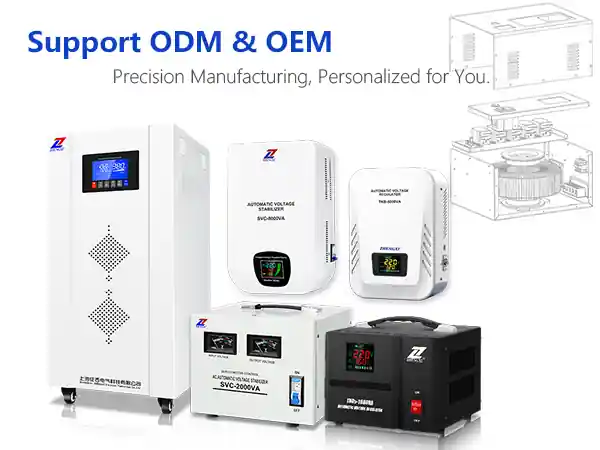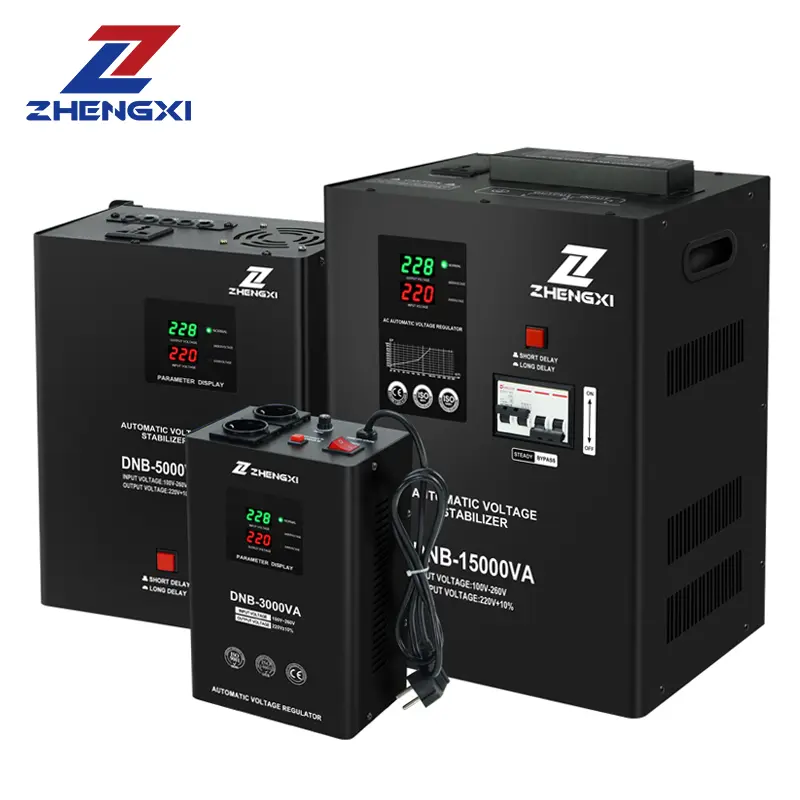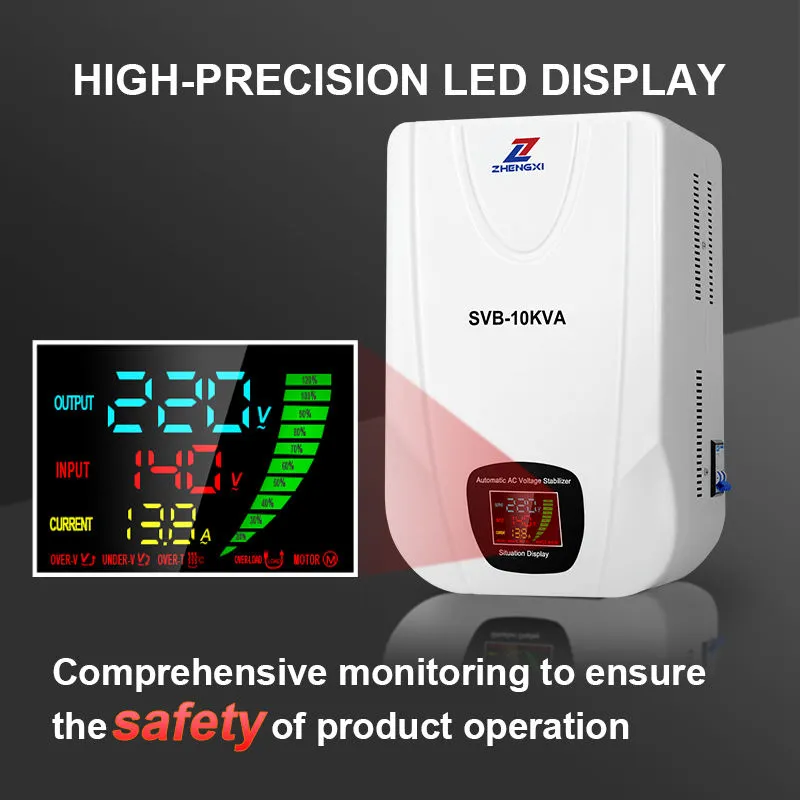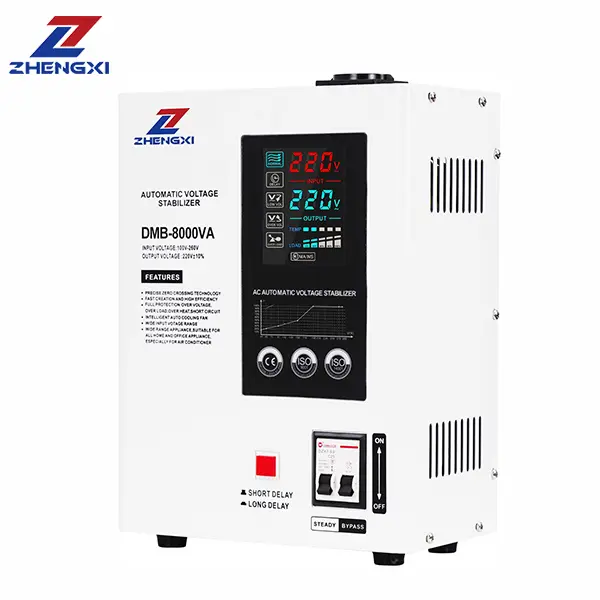If you’re considering a 10KVA voltage stabilizer for your electrical systems, understanding its load capacity is essential for selecting the right model. Whether you’re using it for residential, commercial, or industrial applications, knowing how to calculate the stabilizer’s load capacity will help ensure your equipment is adequately protected from power fluctuations.
This blog will guide you through understanding the load capacity of a 10KVA stabilizer, including how to calculate the kW, amperes, and key factors to consider when choosing a stabilizer for your setup. Let’s dive into the specifics.
What Does 10KVA Mean?
Before we delve into the calculations, it’s important to understand KVA (Kilovolt-Ampere) and its relationship to other power units:
- KVA (Kilovolt-Ampere): A measure of the total power a stabilizer can handle, including both active power (kW) and reactive power (kVAR). It represents the capacity of the stabilizer.
- kW (Kilowatt): The actual usable power that your load consumes.
- Amps (Amperes): The current drawn by the load at a given voltage.
The relationship between these units depends on the power factor (PF), which typically ranges between 0.8 to 1. For most household appliances, the power factor is usually 0.8.
How to Calculate Load Capacity of a 10KVA Stabilizer?
Because kVA includes reactive power, the usable (real) power depends on your equipment’s power factor (PF)—typically 0.8 for motors and many general loads, up to 1.0 for purely resistive loads.
kW=kVA×PF
At PF = 0.8: KW=10×0.8=8kW
At PF = 1.0: 10kVA×1.0=10kW
Tip: If your total connected load is 6 kW at PF 0.8, a 10 kVA stabilizer (8 kW real capacity) gives you a comfortable margin.
2. Converting 10 kVA to Current (Amps)
The maximum current capability depends on whether you’re using single‑phase or three‑phase power:
| System | Voltage (V) | Formula | Current (A) |
|---|---|---|---|
| Single‑Phase | 230 V | I=10 000 / 230 | ≈ 43.5 A |
| Three‑Phase | 415 V | I=10 000/ (1.732×415 ) | ≈ 13.9 A per phase |
Choosing the Right Stabilizer for Your Load
When selecting a 10KVA voltage stabilizer, there are several factors to consider:
- Total Load in kW:
- Add the total power consumption of all devices that will be connected to the stabilizer. For example, if your devices consume 4kW, a 10KVA stabilizer (which can handle 8kW at PF 0.8) will be sufficient.
- Power Factor:
- Check the power factor of your equipment. For devices with motors (like air conditioners and refrigerators), the power factor is usually around 0.8. For purely resistive loads (like heaters or lights), the power factor can be 1.
- Voltage Rating:
- Make sure the stabilizer matches the voltage of your equipment. A 10KVA single-phase stabilizer is ideal for 220V systems, while a three-phase 10KVA stabilizer is needed for 380V-415V systems.
- Safety Margin:
- It’s a good practice to choose a stabilizer with 20-30% more capacity than your total load. For instance, if your total load is 6kW, consider selecting a 10KVA stabilizer instead of an 8KVA model for added protection.
Why Choose a Servo Voltage Stabilizer?
Servo voltage stabilizers are highly recommended for their precision, efficiency, and long-term reliability. Here’s why:
- Precision Voltage Regulation: Servo stabilizers maintain a constant output voltage regardless of input fluctuations, ensuring the safety of sensitive equipment like computers, medical devices, and industrial machinery.
- High Efficiency: These stabilizers optimize energy consumption, reducing operational costs over time while contributing to a greener environment.
- Durability and Reliability: Servo stabilizers are built to endure demanding environments, ensuring minimal maintenance and increased operational lifespan.
Technical Specifications of the 10KVA Stabilizer
| Feature | Specification |
|---|---|
| Capacity | 10KVA |
| Input Voltage | 100V – 260V (Single-Phase) / 304V – 456V (Three-Phase) |
| Output Voltage | 220V (Single-Phase) / 380V (Three-Phase) |
| Frequency | 50Hz / 60Hz |
| Efficiency | ≥ 95% |
| Regulation Precision | ±1%;±3%;±8%;±10% |
| Protection Features | Overload, Overvoltage, Short-circuit, Temperature rise |
| Cooling | Air-cooled or Fan-assisted |
| Certifications | CE, ISO9001, RoHS |
10KVA Voltage Stabilizer Price
The price of a 10KVA stabilizer can range depending on the type, features, and brand. Typically, prices for 10KVA servo voltage stabilizers can range between $300 – $800, with more advanced models equipped with smart control options or higher efficiency levels costing more. The price can also differ based on whether it’s single-phase or three-phase.
FAQs
Q1: What is the difference between a single-phase and a three-phase 10KVA stabilizer?
A1: A single-phase 10KVA stabilizer is used for residential or small commercial applications with 220V input. A three-phase 10KVA stabilizer is necessary for industrial setups or equipment that require 380V-415V input.
Q2: Can a 10KVA stabilizer handle inductive loads like air conditioners?
A2: Yes, a 10KVA stabilizer can handle inductive loads, but it’s essential to account for the starting power of devices like air conditioners, which can be 2-3 times their rated running power. Ensure the stabilizer has sufficient capacity for the startup load.
Q3: What is the typical lifespan of a 10KVA stabilizer?
A3: A high-quality 10KVA stabilizer typically lasts between 5-10 years, depending on usage, maintenance, and environmental conditions. Regular servicing can extend its lifespan.
Conclusion
Understanding the load capacity of a 10KVA stabilizer is crucial for selecting the right model to protect your equipment. By calculating the kW and amperes, and considering factors like power factor and total load, you can ensure your stabilizer meets your needs without overloading.
At ZHENGXI, we offer high-quality 10KVA voltage stabilizers that provide reliable protection for industrial, commercial, and residential applications. Contact us today to find the best stabilizer for your needs!








